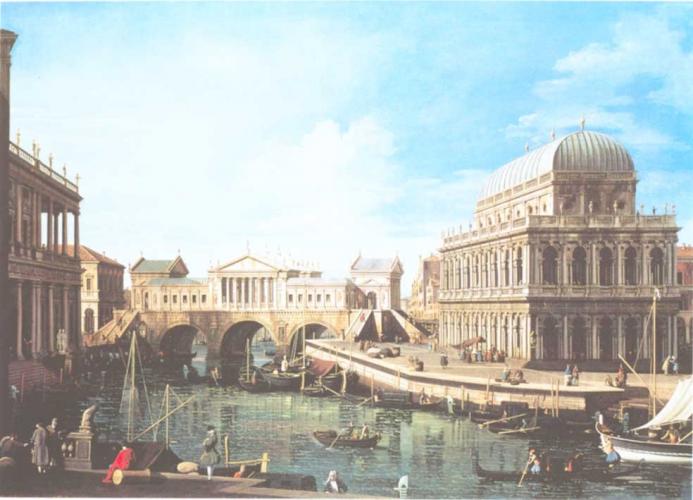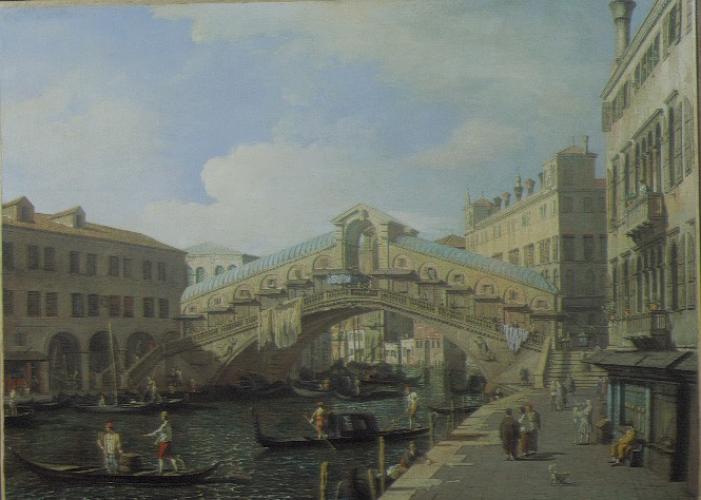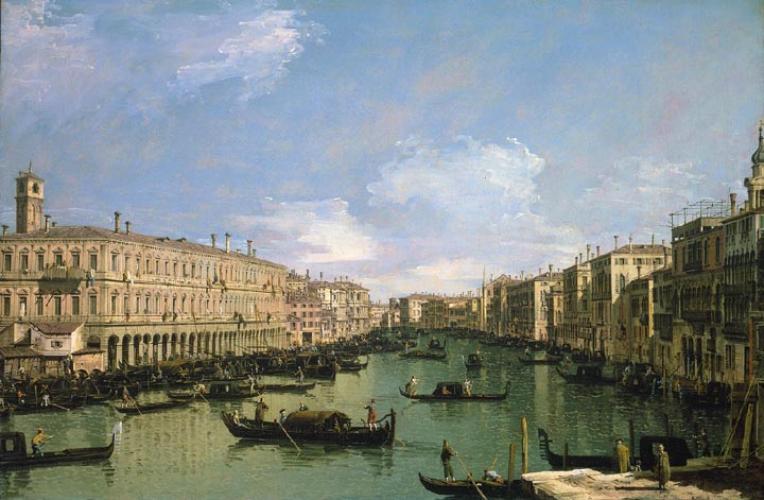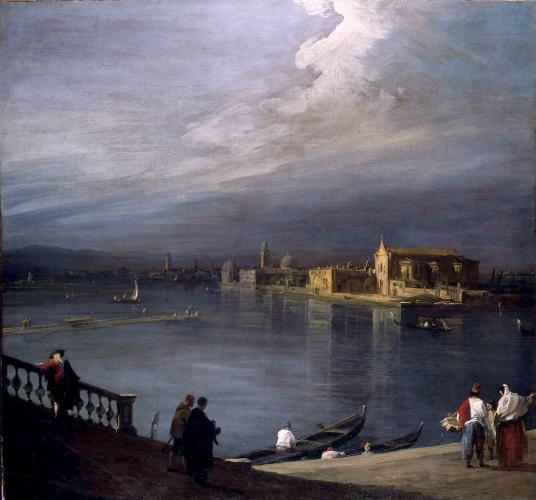Giovanni Antonio Canal (il Canaletto)
Place Born
VenicePlace Died
VeniceBio
Canaletto, the most famous of all view painters, is known above all for his views of Venice, the portrait he has left of his native city being unparalleled, in its range and character, in the work of any other artist. The training he received from his father as a painter of theatrical scenery is evident in Canalettos first canvases, mostly capricci, inspired by a visit to Rome in 1719. These offer little to prepare one for the first Venetian views, produced in the early 1720s. In works such as the set of four large paintings formerly in the Liechtenstein Collection (now divided between the Museo Thyssen, Madrid, and Ca Rezzonico, Venice) a remarkable technical confidence and fluency is unveiled to capture intuitively perceived and majestic atmospheric effects, which go far beyond anything achieved in this (relatively new) genre by its only earlier Venetian exponent of significance, Luca Carlevarijs, now nearing the end of his career. Contemporaries had already recognised Canalettos superiority by 1725, when he, rather than Carlevarijs, secured the commission from Stefano Conti of Lucca to execute the four Venetian views which are the artists earliest documented works (Collection of descendants of Elwood B. Hosmer of Montreal).
After this date most of Canalettos clients were foreigners, above all Englishmen, and he was called upon to meet an increasing demand for Grand Tour souvenirs. To this end he modified his style, suppressing atmospheric effects in favour of consistent warm sunshine and producing the tranquil vision of Venice, and the everyday life of its inhabitants, which is his mature manner. By the mid-1730s, Canalettos agent and chief promoter Joseph Smith, who was to be appointed British Consul in 1744, was procuring for the artist commissions for large series of canvases and it may be assumed that he was being assisted by a well organised studio. The only known member of this is Canalettos remarkably precocious nephew, Bernardo Bellotto (see below), who emerges as an individual artistic personality in the late 1730s, a moment when Canalettos palette turns to the colder tones which were to characterise the younger painters work throughout his career.
The 1740s saw a diminution in the number of commissions Canaletto received, the War of the Austrian Succession curtailing the flow of foreign visitors to Venice, while his employment of studio assistants is evident in a hardening of style and in variations of quality. A calligraphic shorthand is used to represent the smaller figures. Always ready to face new challenges, however, Canaletto adopted etching as a medium, took a heightened interest in the capriccio as a genre and then moved to his client base, spending a decade in England from 1746. The works of his English period, fresh, vivid, lighter in tone and often on a grey rather than a russet ground, include by far the finest portraits of eighteenth-century London, while it is characteristic of the artist’s working methods that he continued to produce views of Italy based on drawings and prints. Canaletto was back in Venice for the last dozen years of his life, his works of this period being in a distinct late style, dark in tone and mannered. Although the execution of many paintings is disappointing, he never lost his powers of invention or his ability to surprise, as in the nocturnes executed for Sigismund Streit (Berlin, Gemäldegalerie). Canaletto’s admission to the Accademia Veneziana di Pittura e Scultura in 1763 gave him belated official recognition, but on his death all he had to show for his achievements were a modest piece of property and twenty-eight unsold pictures.






